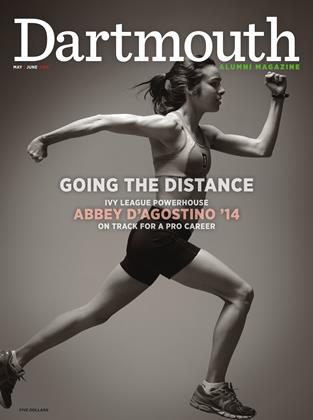PLANK GREW UP IN A HOUSE THAT WAS BUILT ON A Wilmington, Delaware, schist quarry, and as a third-grader she was the youngest member of the Delaware Mineralogical society. so it’s not surprising that her interest in rocks and minerals led to a career as a geochemist. Now she may take rock collecting to a whole new level, thanks to a $500,000 Macarthur Fellowship “genius grant.”
a researcher at Columbia university’s lamont-Doherty earth observatory, she is still mulling how to use the “no-strings- attached” Macarthur money she was awarded in 2012. “it has mostly caused a lot of soul-searching,” says Plank, who is known for her research on how plate tectonics influence volcanoes. Most recently she’s been trying to figure out why hawaii’s once- explosive Kilauea volcano has been erupting so quietly since the 1950s, but she’d like to “do something different in my research because all the discoveries in our field have come just from collect- ing data.” as someone who studied the granite of new hampshire as an undergraduate and now studies Manhattan schist with her Columbia students, she believes a lot of useful data can be gleaned from studying the old rocks of the continents.
“we haven’t really brought all the analytical tools to bear to study the rocks beneath our feet,” she says. “that’s what i’m most interested in doing—sampling the continent to find out what these rocks can tell us about when mountains formed, when they eroded and when the plates came together and came apart. there’s a story in there, a story about the last billion years of earth’s history.”
Plank chose to attend Dartmouth because of “The Stretch,” the earth sciences department’s foreign study program, which took her to Mexico and Costa Rica.
“The secret of why we do geology: It’s outdoors and it’s science and it’s something fun that no one knows anything about.”
 View Full Issue
View Full Issue
More From This Issue
-
 Feature
FeatureZoology
May | June 2014 By C.J. Hughes ’92 -
 Feature
FeatureGOOD HAIR
May | June 2014 By Ana Sofia De Brito ’12 -
 Feature
FeatureSEEKING TO BE WHOLE
May | June 2014 By Shannon Joyce Prince ’09 -
 Feature
FeatureONE PLUS ONE EQUALS THREE
May | June 2014 By Yuki Kondo-Shah ’07 -
 Sports
SportsOut of Nowhere
May | June 2014 By SARAH LORGE BUTLER -
 OUTSIDE
OUTSIDEConfluences
May | June 2014 By MICHAEL CALDWELL ’75
Bonnie Barber
-
 Article
ArticleClass of 1993
May/June 2005 By Bonnie Barber -
 Article
ArticleThe Golf Analyst
July/August 2006 By Bonnie Barber -
 Article
ArticleThe Birdman
Nov/Dec 2007 By Bonnie Barber -
 Article
ArticleNewsmaker
Jan/Feb 2009 By BONNIE BARBER -
 SEEN
SEENNewsmakers
July/Aug 2013 By BONNIE BARBER -
 Article
ArticleFrom the Ashes
MARCH | APRIL 2014 By Bonnie Barber
Article
-
 Article
ArticlePRESIDENT HOPKINS APPOINTED TO IMPORTANT OFFICE
December 1917 -
 Article
ArticleIMPORTANT BEQUESTS TO THE COLLEGE
April 1920 -
 Article
ArticleCrossing the Green
MARCH • 1986 -
 Article
ArticleMasthead
December 1987 -
 Article
ArticleHanover Browsing
October 1956 By HERBERT F. WEST '22 -
 Article
ArticleAlbuquerque
MAY 1970 By RICHARD B. PAUL '41

